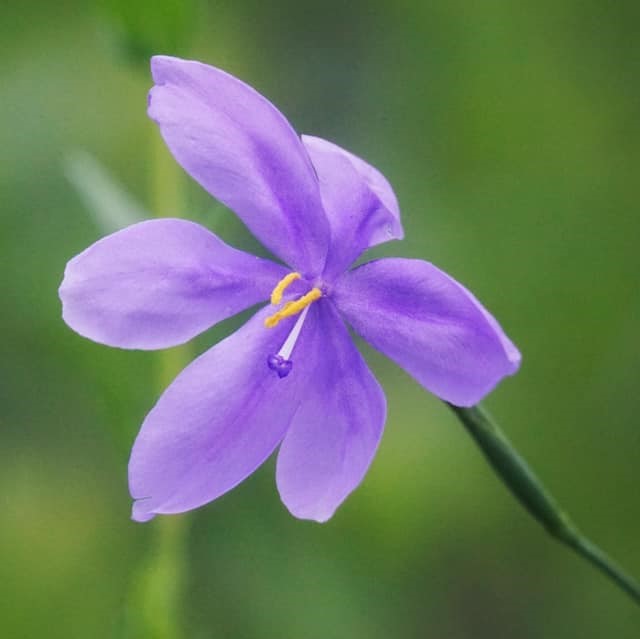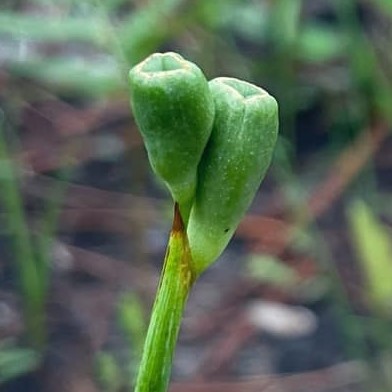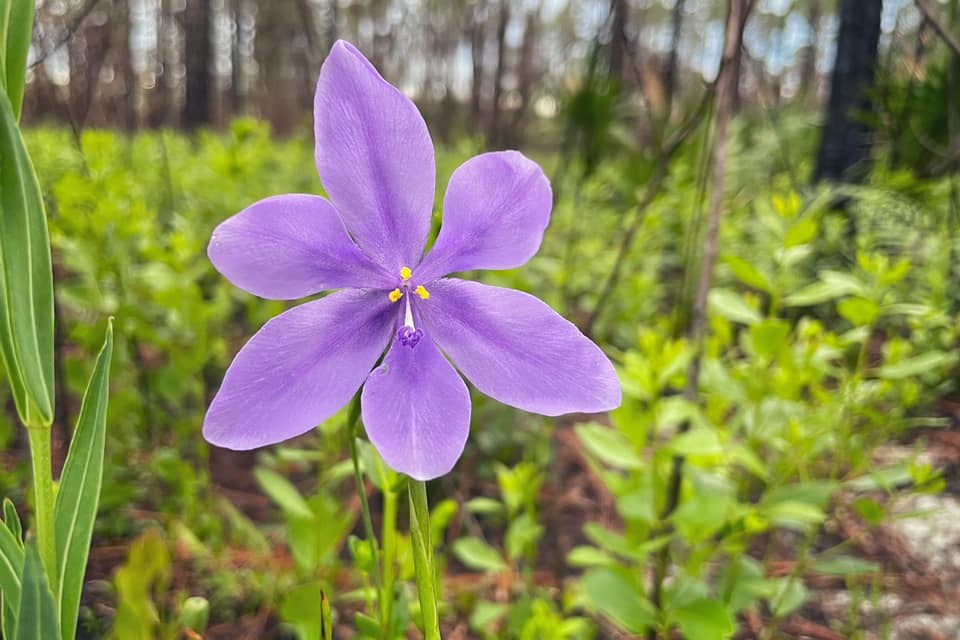Bartram’s ixia
Pictured above: Bartram’s ixia (Calydorea caelestina) by Emily Bell. Click on terms for botanical definitions. View post as a PDF.
Bartram’s ixia (Calydorea caelestina) is a rare state-endangered wildflower endemic to only a small area of northeast Florida. A denizen of wet flatwoods and prairies, it requires a consistent and natural fire frequency (every 2 or 3 years) to persist. It blooms in late spring through mid-summer and, in suitable habitats, populations of hundreds to thousands can create a stunning sea of bright blue across the landscape — but only for early risers. The flowers open at dawn and begin to wilt and fall away by mid to late morning.
Bartram’s ixia is extremely hard to spot when not flowering. Its slender green stem and few narrow grass-like leaves make it relatively indistinguishable from the surrounding vegetation. Its flower, however, is hard to miss. It is up to 2.5 inches across and bright blue or violet with six petals, three conspicuously yellow stamens, elongated anthers, and a purple style.


Bartram’s ixia was formerly classified as Ixia caelestina. The common name references William Bartram, who described the plant in the late 1700s in his book Travels. Threatened primarily by habitat loss and fire suppression, around 60 occurrences are believed to persist today, with at least 10 of those considered to be stable.
Family: Iridaceae (Iris family)
Native range: Baker, Union, Bradford, Clay, Putman, Volusia and Duval counties.
To see where natural populations of Bartram’s ixia have been vouchered, visit florida.plantatlas.usf.edu.
Hardiness: Zone 8B–9B
Lifespan: Perennial
Soil: Moist sandy loam
Exposure: Full sun to part shade
Growth habit: Up to 1 ft tall by 0.5 ft wide
Propagation: Seed, division
Bartram’s ixia is not commercially available. Visit a natural area to see it.

